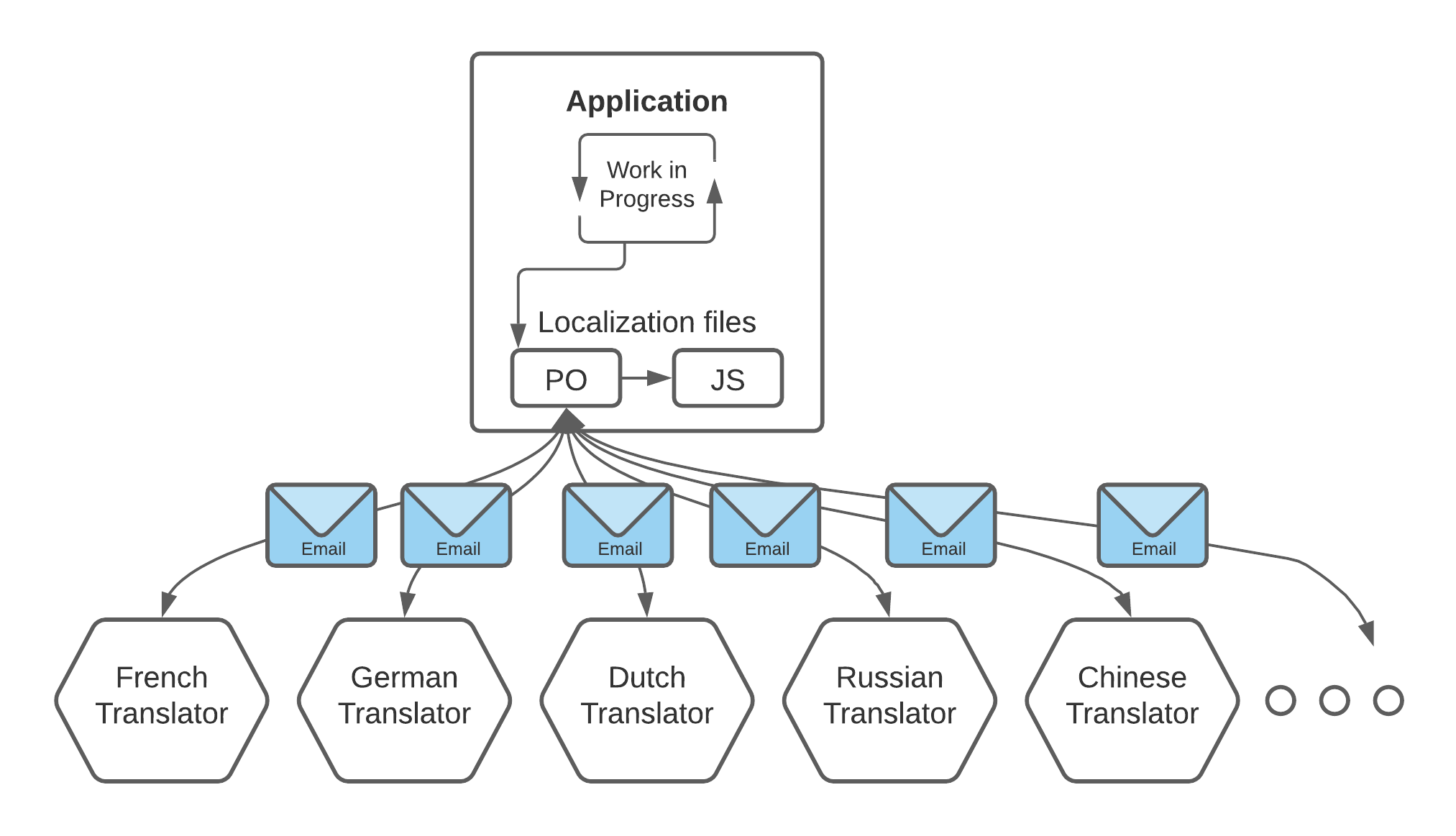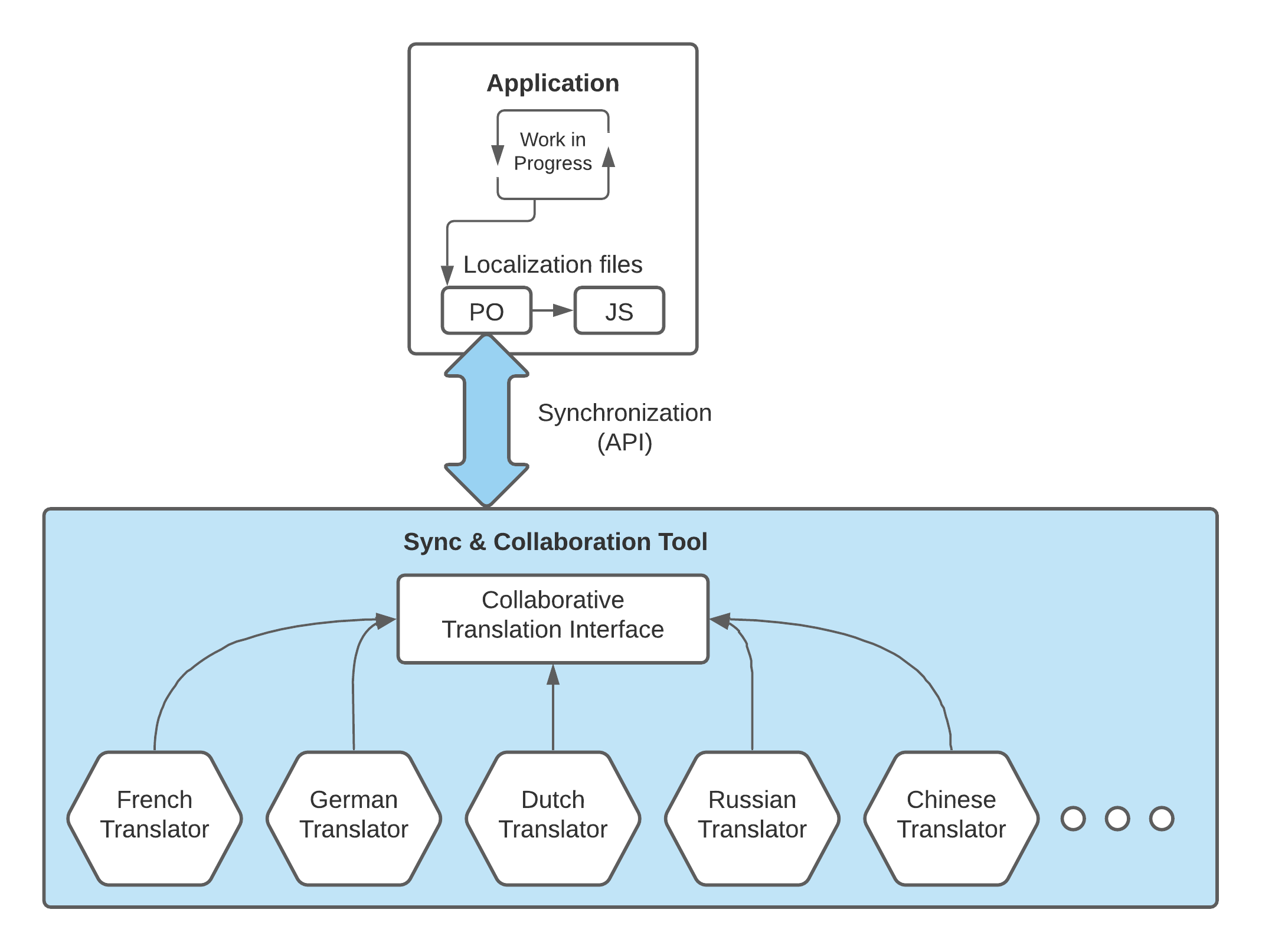Introduction¶
Why use Sync & Collaboration Tools?¶
The easiest way to translate your application is to translate the
.po files directly in a text editor, or with a tool like
Poedit.
This solution may be good enough when your application is still small and doesn’t evolve much, but it quickly becomes hard work when the number of sentences to translate and the target languages to manage increase with time.
It then becomes more and more difficult and time-consuming to manage the
back and forth with the translators, while keeping your application
.po files up-to-date with the current state of a codebase that doesn’t
stop evolving.
That’s why sync and collaboration tools are directly integrated into Lingui to help structure your work with your translators team, to ensure the consistency of the translations, and to make your life easier.
Regular Workflow¶

This is the most basic workflow which involves sending the .po files to
your translators (usually by email) and syncing them back manually into your
application.
This workflow is manageable when your application is still quite small, doesn’t contain a lot of text, and doesn’t evolve much.
Sync & Collaboration Tool Workflow¶

When the amount of text to translate increases, and the number of target languages grows, it becomes more efficient to use a sync and collaboration tool to assist you with the management of your team of translators, and co-evolution between your code and the translated files.
Instead of manually sending and receiving many emails and fixing the
inconsistencies with your code, a sync method is called and your .po
and .js files are directly updated with the latest translations. Your
translators will also be notified when there are new text to translate.
Benefits of these tools¶
Synchronization: unique
yarn syncornpm run synccommand to synchronize your project with all your translators and update your local.poand.jsfiles with the latest translations.Translation Interface: provide a professional and flexible interface to translators.
Translation Memory: assist translators by suggesting previously translated sentences that are similar.
Machine Translation: auto-translate with Google Translate, DeepL, etc. and human-proofread later.
Smart Plural Management: allows to translate
MessageandMessagesinstead of{count, plural, one {Message} other {Messages}}.Consistency: assist translators with
{variable}interpolation and HTML formatting.
Configure your project¶
To synchronize your current application with an online tool, you just have to
add these lines at the end of your .linguirc configuration file:
{
[...]
"service": {
"name": "ToolName",
"apiKey": "abcdefghijklmnopqrstuvwxyz012345"
}
}
The synchronization will then be part of the lingui extract command.
List of available tools¶
Translation.io (https://translation.io/lingui)¶
Documentation: translation-io
Adding a new tool to Lingui¶
If you want to integrate a new tool with Lingui, you have to add your synchronization workflow in a new file located in this directory and then create a pull request on the main Lingui project.